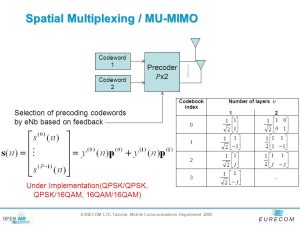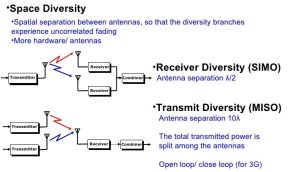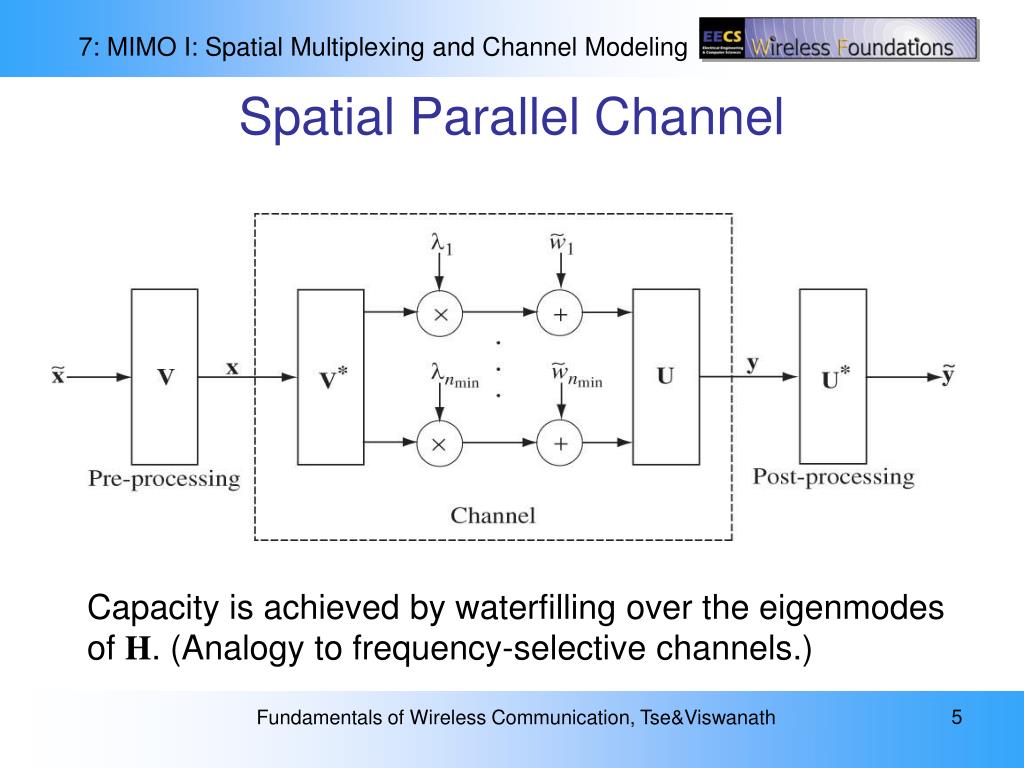In a world where communication is king, wireless systems reign supreme. And at the heart of this revolution lies MIMO – multiple-input multiple-output technology. This enigmatic concept employs spatial diversity techniques to boost data rates by utilizing not one, but multiple antennas on both ends of communication.

But wait, there’s more! Enter MIMO spatial multiplexing – the pièce de résistance that takes data throughput to dizzying heights with simultaneous transmission of numerous data streams over one frequency band. How does it work? By using different antenna configurations for optimal use of available bandwidth and faster speeds in wireless communications.
Antennas are critical players in this game-changing technology as they transmit and receive signals between devices. With beamforming techniques, these antennas can focus energy towards specific directions instead of broadcasting indiscriminately in all directions. The result? Better signal quality, reduced interference from outside sources and overall improved performance from wireless networks.
As we march forward into 5G territory, combining these multiplexing and diversity techniques will be paramount for optimal performance. But here’s the kicker – massive MIMO could potentially utilize hundreds or even thousands of antennas to significantly increase network capacity while reducing power consumption!
So buckle up folks because understanding MIMO’s role in wireless communication systems is crucial when keeping pace with advancements in this rapidly evolving field!
Enhancing Data Rates with Spatial Diversity Techniques
Contents
- 1 Enhancing Data Rates with Spatial Diversity Techniques
- 2 Maximizing Data Throughput with MIMO Spatial Multiplexing
- 3 The Role of Antennas in Wireless Communication Systems
- 4 Improving Data Transmission with Beamforming Techniques
- 5 Advancements in Wireless Communication Systems: The Impact of G
- 6 Combining Spatial Multiplexing and Diversity Techniques for Optimal Performance
- 7 The Future of Wireless Technology: Massive MIMO and Beyond
Wireless communication systems have a secret weapon that improves data rates: spatial diversity. How does it work? By transmitting the same data stream over multiple antennas, which are strategically placed at different locations and orientations. Then, like magic, the receiver combines these signals to create a more robust signal and increase overall data rate.

But wait, there’s more! MIMO spatial multiplexing is another powerful method for enhancing data rates in wireless communications. Rather than just transmitting one measly stream of information over multiple antennas, MIMO spatial multiplexing sends multiple independent streams of information over separate antennas simultaneously. Mind-boggling stuff! This approach allows us to transmit even more information within a given time frame and achieve higher overall throughput.
However (and this is where things get really perplexing), successful implementation of both spatial diversity and MIMO spatial multiplexing techniques requires carefully designed and positioned antennas that minimize interference while maximizing their ability to efficiently receive or transmit signals. That means antenna design is absolutely critical when building a MIMO system that can effectively improve data transmission speeds through either technique without compromising signal quality or reliability.
Maximizing Data Throughput with MIMO Spatial Multiplexing
MIMO spatial multiplexing, an enigmatic technique, amplifies data throughput in wireless communication systems by utilizing multiple transmit and receive antennas. Intriguingly, this approach facilitates the transmitter to dispatch numerous signals concurrently which are subsequently disentangled at the receiver’s end with the aid of spatial diversity techniques. In effect, MIMO spatial multiplexing has the potential to remarkably intensify data rates in wireless communication systems.
To optimize data throughput using MIMO spatial multiplexing technology, a proficient antenna system is indispensable. The selection of transmit and receive antennas must be meticulously scrutinized based on propagation environment and channel characteristics. Furthermore, beamforming techniques can be employed to augment transmission quality by concentrating energy towards specific directions.
The advent of massive MIMO technology has radically transformed wireless communication systems by allowing for even more substantial gains in throughput compared to traditional MIMO systems. With massive MIMO technology, hundreds or thousands of antennas can be utilized at both ends- transmit and receive- resulting in higher spectral efficiency and better coverage particularly when dealing with high user density or interference-laden areas. Overall,Making optimum use out of data throughput with MIMO spatial multiplexing is critical for modern wireless communication systems that strive to provide faster and more dependable connectivity across borders worldwide!
The Role of Antennas in Wireless Communication Systems
Antennas, the unsung heroes of wireless communication systems, wield a mighty influence on signal transmission and reception. They serve as gatekeepers between transmitter and receiver, allowing information to flow freely. But did you know that by using multiple antennas at both ends of a wireless link, we can unlock the full potential of our system?
Spatial diversity is key here – it enhances signal quality while reducing interference. Multiple antennas enable precoding techniques that optimize transmission efficiency in ways previously unheard of. By utilizing multiple streams without increasing bandwidth requirements or sacrificing spectral efficiency, we can vastly improve base station applications where channel capacity is limited.
But wait, there’s more! With spatial multiplexing techniques enabled by multiple receive antennas, data from different sources can be sent simultaneously over the same frequency band using separate antenna elements for each stream. Signal processing algorithms then work their magic to demultiplex these signals at the receiver end and recover original data streams.
Who knew something as seemingly simple as an antenna could have such a complex and powerful impact on wireless communication systems? It’s truly mind-boggling how much they contribute to our daily lives without us even realizing it.
Improving Data Transmission with Beamforming Techniques
The use of beamforming techniques has become an enigmatic and elusive aspect of wireless communication systems. Employing multiple antennas, signals are directed towards a specific direction to form a beam that maximizes the received signal strength at the receiver end – but how this is done remains perplexing. The advantages of beamforming are numerous, including transmit diversity gain which reduces errors caused by fading channels through sending two versions of data via different antennas. One example of this is Alamouti code for transmitting data over wireless systems.
Another advantage involves increasing signal-to-noise ratio (SNR) and overall system capacity through focusing transmitted energy towards a specific direction while reducing interference from other directions. This leads to higher quality transmission with fewer errors in SNR, resulting in increased throughput when combined with MIMO spatial multiplexing that can be complex and hard to understand.
As 5G looms on the horizon, advancements in beamforming technology are expected to play an even more bewildering role in improving wireless communication systems’ performance further. Massive MIMO (input multiple output) technology uses hundreds or thousands of antennas simultaneously working together via advanced digital processing algorithms that optimize individual antenna beams dynamically based on user location information and channel conditions for maximum efficiency and capacity gains – all seemingly too good to be true!
In conclusion, it’s evident that combining spatial multiplexing and diversity techniques with the mysterious magic behind beamforming will continue being essential components for optimizing future generations’ wireless networks beyond 5G as well as existing ones today! It truly boggles the mind!
Advancements in Wireless Communication Systems: The Impact of G
The advent of G technology has sparked a revolution in the wireless communication industry, paving the way for remarkable advancements. Among these, perhaps one of the most noteworthy is the employment of multiple antennas – or MIMO wireless technology. By employing this state-of-the-art technique that utilises numerous antennas at both transmitter and receiver ends, data rate and signal-to-noise ratio have been significantly enhanced.
Diversity and spatial multiplexing form two integral components that make up MIMO wireless technology. Diversity plays an important role in diminishing coupling between antennas while spatial multiplexing makes use of several data streams to improve throughput rates. The synergistic interplay between these techniques results in faster speeds than those offered by previous generations like LTE.
To harness the full potential of MIMO wireless technology, singular value decomposition (SVD) is employed to optimise performance by selecting which rx antenna ought to be used for every transmitter or receiver. This allows better allocation of resources leading to improved overall system efficiency. With continued advancements being made in G Technology, we can expect even more astounding improvements in upcoming wireless communication systems!
Combining Spatial Multiplexing and Diversity Techniques for Optimal Performance
The amalgamation of spatial multiplexing and diversity techniques is an extraordinary technique to heighten the transmission of data in wireless communication systems. The utilization of multiple antennas enables us to transmit more bits per second by utilizing the spectrum more effectively. With this methodology, spatially uncorrelated signals can be sent simultaneously from different antennas, thereby enhancing signal quality and diminishing dispersion.
One such approach that is commonly employed for combining these techniques is orthogonal frequency-division multiplexing (OFDM). This technique employs numerous modes of transmission to send data over many subcarriers concurrently. Consequently, we can use all available bandwidth while avoiding interference between subcarriers.
However, another crucial aspect when employing these methods together is the coefficient matrix. It determines how each antenna contributes to the overall signal and its optimization leads to even better data rates whilst ensuring each antenna’s effective usage. Overall, combining spatial multiplexing with diversity techniques provides an efficient way to maximize performance in wireless communication systems without necessitating further hardware or intricate protocols.
The Future of Wireless Technology: Massive MIMO and Beyond
The future of wireless technology lies in the perplexing and bursty world of Massive MIMO, or Massive Multiple Input Multiple Output. This cutting-edge approach utilizes a multitude of antennas at both the transmitter and receiver to enhance data throughput while simultaneously reducing error rates. Through this technique, multiple copies of transmitted data are sent all at once over individual channels, leading to reduced path loss and minimized fading – ultimately resulting in an improved overall information transfer.
Massive MIMO is capable of achieving better spectral efficiency than traditional MIMO systems by transmitting more signals concurrently through each given channel without increasing bandwidth usage. The increased availability of antennas for communication between devices further reduces interference from other sources that may impact signal quality.
However, implementing massive MIMO presents several challenges due to its complex nature involving the large number of antennas used. Decoding received signals requires advanced algorithms designed specifically to handle such complexity effectively. Furthermore, ensuring proper synchronization among all antennas is crucial for coherent transmission and receiving.
Despite these obstacles, research into massive MIMO continues as it holds enormous potential in enhancing wireless communication systems beyond what current technologies can achieve alone- including 5G networks! With new advancements emerging constantly in this field, we can expect even greater improvements in data throughput and overall performance shortly ahead!


